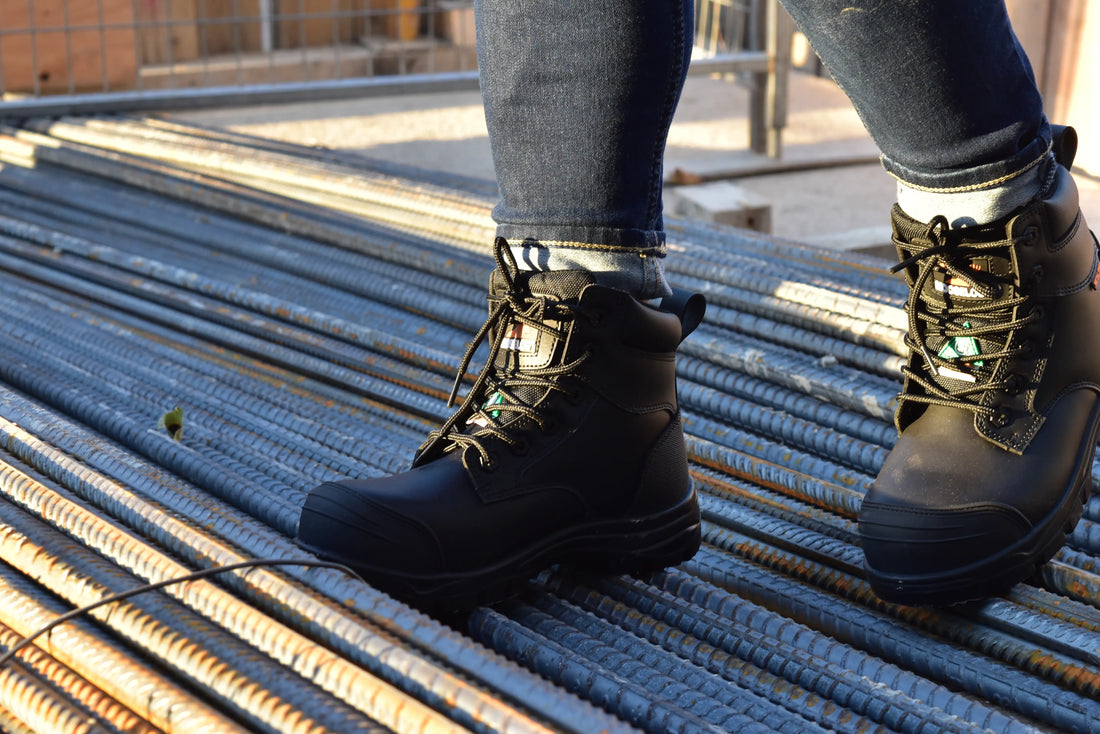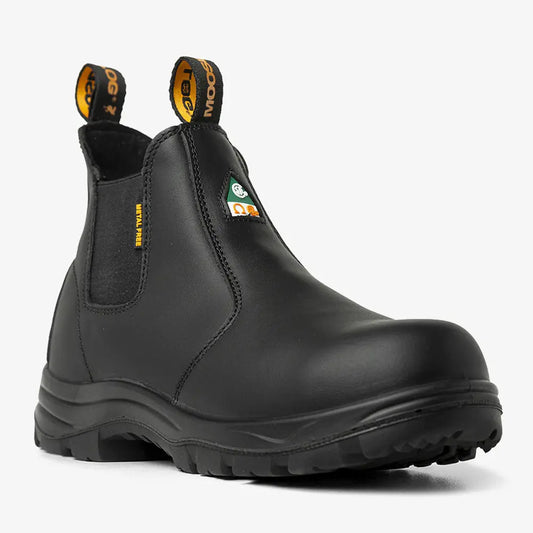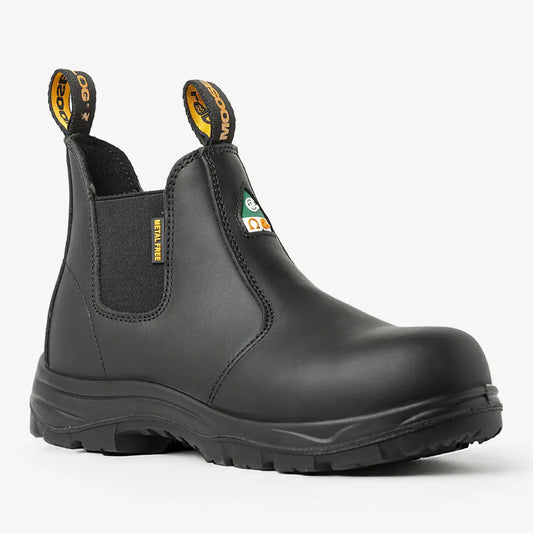
OSHA Footwear Rules: What Workers Need to Know (2025 Update)
Every year, thousands of workers get sidelined by foot injuries or slapped with inspection violations. Why? They’re wearing the wrong boots or no safety boots at all. If you’re confused about what OSHA demands, we're here today to break down what the law says about protective footwear, from who pays for it, to how to tell if your boots are compliant, to what's new in 2025.
What are the OSHA requirements for footwear?
OSHA’s foot protection rule (29 CFR 1910.136) is clear: if your job involves falling objects, sharp hazards, or electrical risks, you need protective footwear. No exceptions. But OSHA doesn’t slap an “approved” sticker on any brand. Instead, it points to ASTM F2413, the work boot standard.
Here’s the summary:
- Hazards present? You need safety boots.
- Employer’s job: Make sure you’re wearing them.
- Compliance: Boots must pass ASTM tests.
Does OSHA require employers to pay for work boots?
OSHA says employers must foot the bill for specialized PPE (like metatarsal guards or electrical-hazard boots). But everyday safety boots you can wear off-site? That’s often on you. Check your company’s policy or union agreement. If the boots are niche (think: not your average steel-toe), your boss likely covers them.
What does ASTM mean in boots?
ASTM F2413 is the benchmark. It tests for:
- Impact (I/75): Survives 75 ft-lb drops.
- Compression (C/75): Handles 2,500 lb of crush.
- Puncture Resistance (PR): Stops nails and sharp objects.
- Electrical Hazard (EH) or Static Dissipation (SD): Keeps you safe from shocks.
- Metatarsal Protection (MT): Guards the top of your foot.
Look for a label inside the boot’s tongue or lining, like: ASTM F2413-18 M I/75 C/75 PR EH. That’s your proof it’s legit.

How to tell if shoes are OSHA approved?
No ASTM F2413 label? No compliance. Here’s your checklist:
- Check the label: “Meets ASTM F2413” plus protection codes.
- Read the fine print: Product descriptions should confirm ASTM compliance.
- Match your job: Ensure the boot’s features (toe, sole, EH) fit your risks.
- Trust the source: Reputable brands share test data.
If it’s missing these, don’t bet ybut our toes on it.
Are composite toe boots OSHA approved?
Yes, if they meet ASTM F2413. OSHA doesn’t play favorites, Composite-toe boots (fiberglass, carbon fiber, Kevlar) are just as compliant as steel-toe if they meet ASTM F2413. Composites are lighter and don’t conduct heat or electricity, making them a win for electricians or freezing worksites. Pick what suits your job.
Are work boots required in warehouses?
If your warehouse has forklifts, heavy pallets, or sharp debris, OSHA says safety boots are non-negotiable. Even in lighter setups, slip-resistant or puncture-proof soles are a smart move. Your employer assesses the risks, but 29 CFR 1910.136 applies: hazards = boots.

Your OSHA Boot Checklist
Before you clock in, run this:
- Label says “Meets ASTM F2413”
- Toe protection (I/75 C/75) visible
- Features match your job (PR, EH, SD, MT)
- Boots don't have cracks or worn soles
- Know your employer’s policy on who pays
Check all boxes? You’re good for inspections and safe on the job.
2025 Updates: What’s New in OSHA Footwear Rules
OSHA's core footwear standards (29 CFR 1910.136) haven't shifted much this year, but here's what's worth noting for boots on the ground:
- Annual Penalty Adjustments: Under the Federal Civil Penalties Inflation Adjustment Act, OSHA bumped civil fines by about 2.6% effective January 15, 2025. Serious violations now max out at $16,550 (up from $16,131), so non-compliance hits harder. Double-check those labels before an audit.
- Slip Resistance in Focus: OSHA continues to recognize ASTM F2413 as the key performance standard for safety footwear. That said, slip resistance is increasingly evaluated in wet/oily environments using the newer industry method ASTM F3445-21, especially for high-risk jobs like warehousing or food processing. It's not a formal OSHA requirement yet, but inspectors are eyeing it more closely for hazard assessments.
- Employer Tech Trends: While OSHA doesn't mandate digital tools, more companies are using apps and inventory trackers to log PPE compliance (like ASTM certifications) during inspections. It's a smart move for streamlining audits, but it's on your boss, not Uncle Sam.
These tweaks reinforce the basics: assess hazards, match boots to risks, and stay compliant to avoid downtime or fines.
The Bottom Line
OSHA’s rules are straightforward: find boots with an ASTM F2413 label, match them to your job’s hazards, and you’re set. Don't buy into brand hype or marketing, but focus on the specs. For our Canadian crew, CSA Z195 follows the same testing standards, so one certified pair keeps you covered across both borders.
At MooseLog, every boot meets those requirements. Tested, certified, and ready for the work you do.






